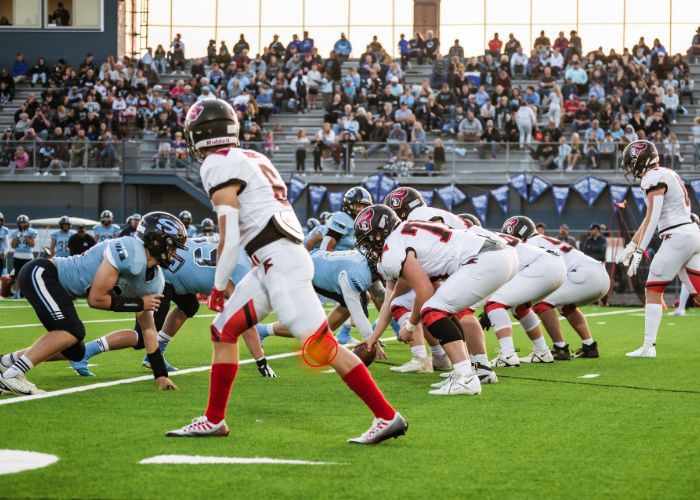What causes shoulder instability?
The acromioclavicular, glenohumeral, and sternoclavicular are three distinct joints within the shoulder girdle that are susceptible to separation injuries. The glenohumeral joint is a ball-and-socket arrangement consisting of the head of the humerus (upper arm bone) and the glenoid portion of the scapula (shoulder blade). This joint configuration enables joint movement in several directions, but the surrounding tendons and ligaments do not provide sufficient joint stabilization. This lack of joint stability heightens the risk of a joint separation from a traumatic event such as a direct and forceful blow to the shoulder. In a joint separation, the connecting ligaments are stretched or torn from their anchoring points on the bone. Any damage to the soft-tissue restraints can result in shoulder instability from their weakened ability to stabilize the joint. This shoulder instability can then lead to repeat shoulder dislocations which can lead to loss of bone on the glenoid.
What is the treatment for shoulder instability?
Occasionally, the glenoid socket of the scapula may experience a fracture along the rim following an anterior shoulder dislocation. Recurrent shoulder dislocations can also lead to loss of the glenoid bone over time. This bony joint damage can further perpetuate shoulder instability as well as hinder its ability to withstand any outside stress. Patients that sustained greater than 20% glenoid bone loss, have large joint defects, or have failed several joint revision surgeries (including Latarjet procedure) are candidates for a distal tibial allograft reconstruction procedure. This newer surgical technique provides a means for articular cartilage restoration as well as an individualized anatomical bone graft. Dr. Ronak Mukesh Patel, orthopedic shoulder doctor, treats patients in Sugar Land, Pearland, and the Houston, Texas area who have suffered multiple shoulder dislocations and are in need of surgical reconstruction of the glenoid socket.
What is distal tibial allograft glenoid reconstruction?
A distal tibial allograft glenoid reconstruction is performed as an open surgery. The graft is a cadaver distal tibia (upper bone of the ankle joint). This graft is preferred because it has the same radius of curvature (joint shape) as the native glenoid socket and has articular cartilage. To begin, general anesthesia and a nerve block are administered, and the patient is situated into a beach-chair position. A large incision is created over the glenohumeral joint. Once Dr. Patel has access to the glenoid socket portion of the joint, the bony defect is measured to ensure a proper graft fit. The distal portion of the tibia will have been previously harvested from a cadaver donor. This bone graft is meticulously cut to the specified measurements then anchored to the bone with special surgical screws. Once fastened, the new graft is evaluated for proper articulation with the humeral head. The shoulder capsule is then closed over the new graft and the surgical instruments are removed.
What is the recovery period like after distal tibial allograft glenoid reconstruction?
The recovery process following a distal tibial allograft glenoid reconstruction includes a strict rehabilitation protocol to ensure the best possible recovery outcomes. Most patients can expect a full recovery with a return to their normal daily and athletic activities in approximately 6-8 months. The following can be anticipated by patients in the Sugar Land, Pearland, and Houston, Texas area:
- A sling or other immobilization device is placed immediately following surgery and remains in place for 6 weeks. During this period, weight-bearing activities will be avoided by the repaired shoulder.
- Passive range of motion exercises typically begin 2 weeks after surgery and continue until the immobilization device is removed.
- A combination of rest, ice, and non-steroidal anti-inflammatory medications (NSAIDs) can help manage any post-operative pain and inflammation. If necessary, Dr. Patel can prescribe stronger medication to be taken as directed.
- The key to a successful recovery following distal tibial allograft glenoid reconstruction is complying with the post-operative care instructions given by Dr. Patel. Allowing the bone graft to properly heal can significantly reduce the risk of graft failure or continued shoulder instability.
Shoulder Instability Surgeon

Do you have recurrent shoulder dislocations or an unstable shoulder? If you have sustained greater than 20% glenoid bone loss, have large joint defects, or have failed several joint revision surgeries (including Latarjet procedure) you may be a candidate for a new surgical technique called a distal tibial allograft reconstruction. A distal tibial allograft reconstruction provides a means for articular cartilage restoration as well as an individualized anatomical bone graft for patients in Houston, Sugar Land, and Pearland, TX who have shoulder instability. Contact Dr. Patel’s team today to see if you are a candidate!








